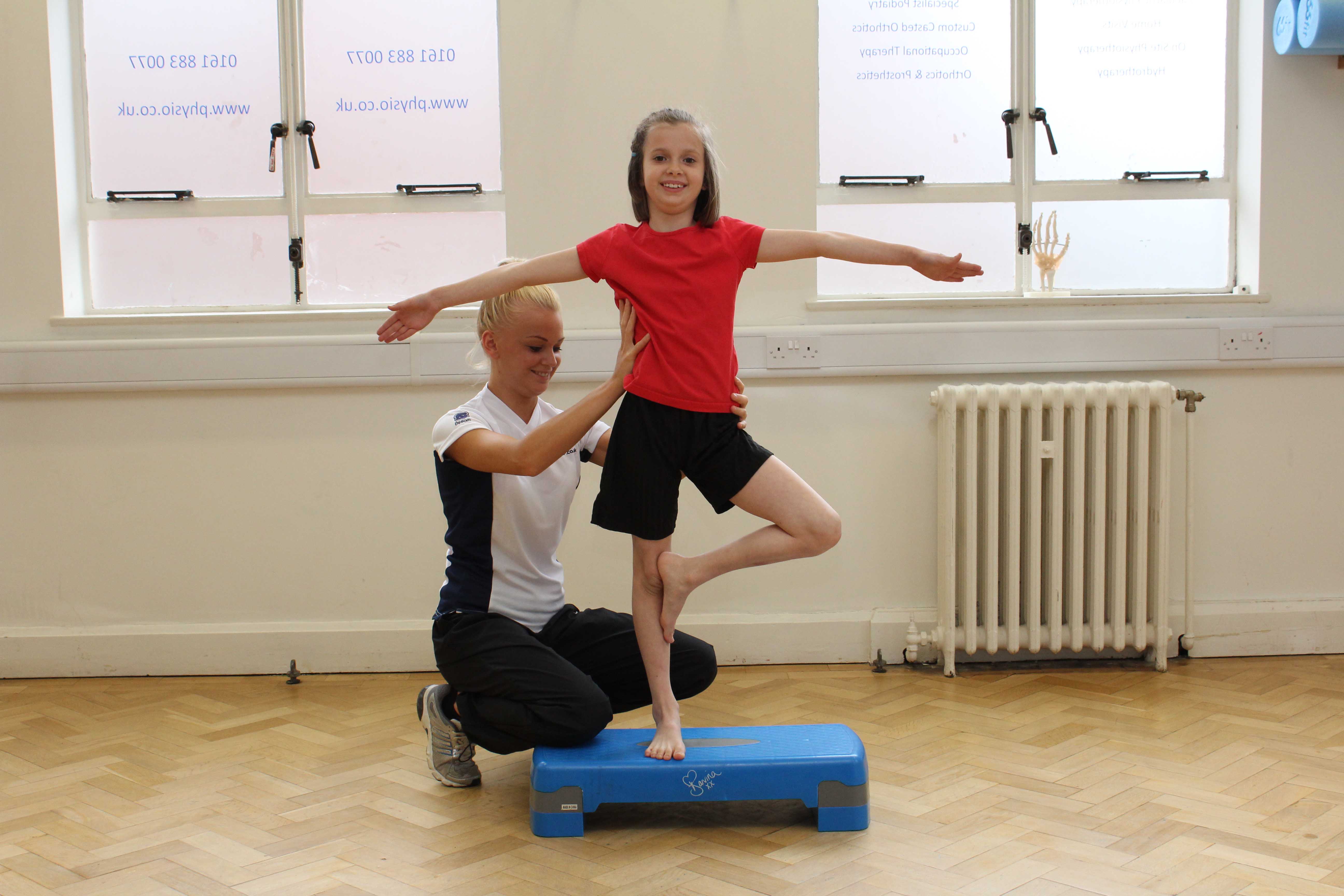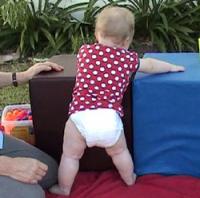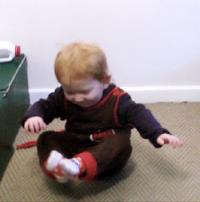hypermobility in babies uk
Hypermobility refers to an increased range of movement in multiple joints for their age. Hypermobility may affect just one joint or many joints.

How Hypermobility And Low Muscle Tone Affect Your Baby S Development Skills For Action
It affects 7 10 of school age children in the UK.

. The older you are the less likely it is you will be hypermobile. The older you are the less likely it is you will be hypermobile. Joint hypermobility is thought to be very common particularly in children and young people.
It is extremely common in children having being reported in 25 to 50 of those younger than 10 years of age. Common parental concerns Children may initially take longer to achieve crawling walking and running and may be more likely to bottom shuffle. These results provide a platform to evaluate the relationships between the Beighton criteria and key clinical features.
Your child should wear supportive trainers and exercises may need to be adapted to avoid high impact on. 4 points and pain in 4 or more joints for at least 3 months joint hypermobility syndrome likely. Most children will get less flexible as they get older and should improve as the childs strength and.
Most children are flexible but some more so than others. Hypermobility may affect just one joint or many joints. Managing Joint Hypermobility A guide for Dance Teachers Isobel Knight MSc Moira McCormack MSc Howard Bird MA MD FRCP 1 Summary Joint hypermobility a larger than average range of movement at a joint which can be inherited or acquired through training is common among dancers because of the aesthetic and flexibility requirements of dance.
This is a favourite with many mothers and enables them to feed baby at the same time as getting both mother and baby washed during some skin-to-skin time. With a holistic solution-focused approach to living well with a hypermobility syndrome our expert. To facilitate the development of specialised expert consensus opinioned and holistic management programmes for children and young people with Joint Hypermobility Syndrome JHS using a bio psychosocial model which acknowledges the global impact of.
Most UK midwives teach a way of holding and feeding a baby that is difficult uncomfortable and unsustainable for women with hEDSHSD. Anyone who has symptoms as a result of having hypermobile joints but who does not have all the features of Ehlers-Danlos syndrome has a hypermobility spectrum disorder. Joint hypermobility is often hereditary runs in families and is the result of ligaments around joints being more lax and as ligaments normally restrict.
Joint hypermobility Joint hypermobility This booklet provides information and answers to your questions about this condition. Has this type of hypermobility then half of their children are likely to inherit it though members of the same family may. Arthritis Research UK booklets are produced and printed entirely from charitable donations.
While standing put hands flat on floor while knees stay straight. Most children are flexible but some more so than others. RightPath 2019 and expert opinion in a review article Smith and Ramanan 2013Expert opinion describes the doctors role as establishing an accurate diagnosis of joint.
Joint hypermobility syndrome means your joints are stretchy and loose. It is extremely common in children having being reported in 25 to 50 of those younger than 10 years of age. Studies have shown that up to 71 of children under 8 and 55 of 4-14 year olds are hypermobile de Inocencio et al 2004.
It is not an illness or disease and is a normal variation. In general hypermobility should be regarded as a connective tissue advantage providing the child is strong and fit difficulties occur mainly when the body has become weak and deconditioned. Hypermobility refers to an increased range of movement in multiple joints for their age.
There is no up-to-date research to tell us exactly how frequently it occurs. The recommendation on when community management is usually appropriate is based on musculoskeletal triage guidance for children and young people RightPath 2017. The HMSA The Hypermobility Syndromes Association.
Some estimates suggest that around one in every five people in the UK may have hypermobile joints. However for most of these children there is no associated pain. Hyper means more and mobility means movement therefore hypermobility really just means that joints move more than is typically expected.
The Hypermobility Syndromes Association is here to support everyone with symptomatic hypermobility whatever the cause however mildly or severely they may be affected and whether or not they are diagnosed. Hypermobility is commonly seen in young children. Hypermobility also commonly known as double jointed describes how joints can move.
Hypermobile Ehlers-Danlos syndrome hEDS which used to be known as the hypermobility type or type 3 is thought to be the most common genetic connective tissue disorder. Children with gHSD and hEDS should be encouraged to join in with PE as far as possible. This can occur with just a couple of joints or all joints.
But when hypermobility causes pain it could point towards joint hypermobility syndrome which needs to be treated. It is not an illness or disease and is a normal variation. Hypermobility refers to an increased range of movement in multiple joints for their age.
Hypermobility is commonly seen in young children. All joints have a cavity containing a small amount of fluid which allows movement to happen. People with Joint Hypermobility and musculoskeletal pain.
This is especially important as some UK research has shown that hypermobile children who are overweight are 12 times more likely to develop symptoms in adolescence Jane says. This readiness for action depends on the sensitivity of the stretch receptors in the muscles. It affects 7 10 of school age children in the UK.
Between 25-50 of children under 10 are considered hypermobile. If the sensitivity to stretch is very low the muscles are slow to respond and they appear to be weak and floppy. These problems mainly affect children and young adolescents with extra-flexible hypermobile joints who develop pain on exercise which persists when they rest.
Hypermobility in babies uk. We have shown that the prevalence of hypermobility in UK children is high possibly suggesting that the Beighton score cutoff of 4 is too low or that this scoring is not appropriate for use in subjects whose musculoskeletal system is still developing. The term muscle tone refers to the muscles readiness for action.
Most children will get less flexible as they. In many cases the joints become stiffer with age although joint hypermobility and its associated symptoms can continue into adult life. A doctor will also use more detailed criteria to help their diagnosis.
4 points hypermobility likely. Infants who appear to be floppy and have hypermobile joints are often given a diagnosis of low muscle tone. A joint is the place on the body where two bones meet.
Joint hypermobility in babies and children is even more common and usually causes no problems. How common is hypermobility. If you remain concerned PALS can also advise upon how to make a formal complaint.
Advice for hypermobility oxleasnhsuk Children with hypermobile joints have too much movement in their joints.

Positive Health Online Article Short Features And Brief Takes Issue 181 Pediatric Physical Therapy Hypotonia Occupational Therapy Schools

What Is Hypermobility In Babies Children Young Adults Therapy Stars

What Is Hypermobility In Babies Children Young Adults Therapy Stars

Pin By Leigha Kaecker On Awareness Ehlers Danlos Syndrome Mastocytosis Ehlers Danlos Syndrome Awareness Ehlers Danlos Syndrome Ehlers Danlos

Joint Hypermobility In Infants To To Assess Low Muscle Tone Pediatric Physical Therapy Muscle Tone

Hyper Mobility Syndrome Children Conditions Paediatric What We Treat Physio Co Uk

People Who Can Help Me Ehlers Danlos Syndrome Hypermobility Ehlers Danlos Syndrome Elhers Danlos Syndrome

Watch 6 Month Old Typical Atypical Motor Development Side By Side Baby Development Activities Pediatric Physical Therapy Therapy Activities
Living With A Hypermobile Toddler

Should Babies Learn To Walk Before They Can Crawl Baby Learning How To Make Stairs Kids Learning

How Hypermobility And Low Muscle Tone Affect Your Baby S Development Skills For Action

How Hypermobility And Low Muscle Tone Affect Your Baby S Development Skills For Action

How Hypermobility And Low Muscle Tone Affect Your Baby S Development Skills For Action

How Hypermobility And Low Muscle Tone Affect Your Baby S Development Skills For Action

Joint Hypermobility In Babies And Children Emma S Diary

Is There A Happy Ending For Children With Hypermobility Double Jointed


